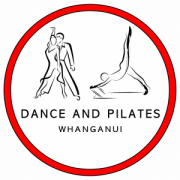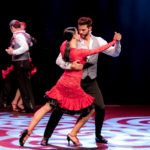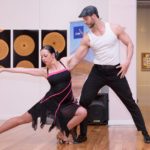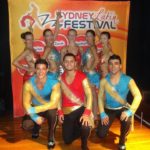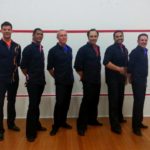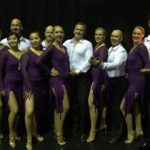| René Olmos was born in Argentina in 1982. He moved to New Zealand in 2009. He has the Tango dancing on his blood as his mother is a retired professional Tango dancer. As most of Latinos, Rene was born dancing. He was brought up with the Tango and other Street Latin dances: Salsa, Bachata, Cuarteto, Cumbia, Merengue, Mambo, Folklore.
When he came to New Zealand he wanted to share his culture, and linked up with several dance schools to teach, compete and perform. |
||
|---|---|---|
He has been teaching, performing and competing locality in New Zealand and overseas at:
Rene performs and teaches the TangoFrom Rene’s homeland of Argentina (carrying the family tradition), Tango is a popular expression of Argentine dance – from the Río de la Plata region including Uruguay. Tango was born at the end of the 19th century- beginning of the 20th century. Tango is a dance that has influences from both African and European cultures. Tango is a vibrant and playful dance between two people. In order to win the favour and be in the arms of the woman of his desire, a man soon learned that being a good dancer improved his chances! With a shortage of women, a man became a skilled dancer by practicing with other men so that when the opportunity to dance with a woman came, she would choose him over others. Rene performs and teaches Salsa.Salsa has become one of the most popular forms of social dance. It is a mix of Cuban Son, other Caribbean musical genres, and Afro-Latin rhythms that originated in the Caribbean. The dance, along with the salsa music that we love today originated in the mid-1970s in New York developed by musicians of Caribbean origin. Salsa includes many styles: romantic, Cuban Rueda, Mambo Salsa, Miami Salsa. He says that Salsa dance originated in Cuba and was taken up by the Columbians before also catching on in the USA and now in New Zealand. Just like the New Zealand Pavlova, there is disagreement as to where it started first. Rene hs influence in his salsa dance from his greater teachers Jose Polanco, known worldwide as Mister Pachanga. Also from Isberto Vivio Ramos known in New Zealand as the father of Afro-Cuban groove from Cuba . Rene performs and teaches Bachata.This beautiful sensual dance is from the República Dominicana. It started with bolero rhythms and is influenced by other styles such as Cuban son and merengue. Bachata arose in the marginalized areas of Santo Domingo during the sixties and early seventies after the death of Truijillo and it was dismissed as music of the poor classes. The themes of the songs are often bitter and the words talk about a lack of love and betrayal. Bachata has evolved and is been taking over an urban sensual tweak. Locally:In Whanganui, New Zealand in 2017 you might have seen their lattest performances. Rene Olmos and Irina Kapeli, demonstrated three Latin American dances at Whanganui Festival of Cultures at the Majestic Square as well as at the Latin American and Spain Film festival at the Sergeant Gallery. |
||
